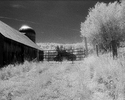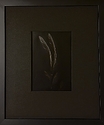mtnbkr
Member
As with many people my age, my near vision is getting weaker and I now need some form of reading glasses to read anything at distances closer to arms' length. This has made focusing SLRs difficult, but I have noted I could do so with my 1.5x drugstore readers. I assumed that meant a +1.5 diopter for my cameras would be appropriate.
Then, I found a guy on ebay selling a 3 pack of diopters in +0.5, +1.0, and +1.5 for less than the normal price of just one. I bought that and assumed I would use the +1.5 and toss or give away the others.
I was surprised when I found that it was the +0.5 diopter I needed. The +1.5 was way off and the +1.0 was better than no diopter but still a tad fuzzy.
I'm glad I found the seller with 3 because if I had to buy just the one, I would have assumed +1.5 and that wasn't even close. At least now I have 2 steps stronger as my eyes get older and weaker.
Now I just need a +0.5 for my other SLR...
Chris
Then, I found a guy on ebay selling a 3 pack of diopters in +0.5, +1.0, and +1.5 for less than the normal price of just one. I bought that and assumed I would use the +1.5 and toss or give away the others.
I was surprised when I found that it was the +0.5 diopter I needed. The +1.5 was way off and the +1.0 was better than no diopter but still a tad fuzzy.
I'm glad I found the seller with 3 because if I had to buy just the one, I would have assumed +1.5 and that wasn't even close. At least now I have 2 steps stronger as my eyes get older and weaker.
Now I just need a +0.5 for my other SLR...
Chris






